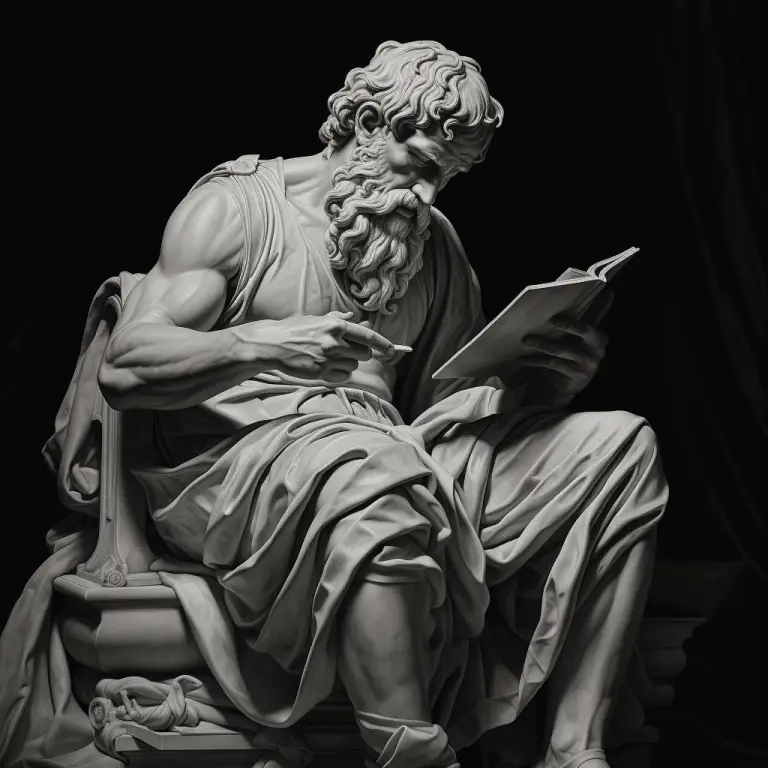What is academy with Plato? Plato’s Academy, also known as the Platonic Academy, was an ancient Greek educational institution that played a significant role in the development of philosophy during Plato’s lifetime. Founded by Plato himself around 387 BC, this renowned school became a center for intellectual and philosophical discussions.
The History of Plato’s Academy
Plato’s Academy holds a significant place in the history of ancient Greek philosophy. As an expert in this subject, I’ll delve into the origins and evolution of this renowned educational institution.
Plato founded the Academy around 387 BCE, shortly after his return from travels to Italy and Sicily. Located just outside Athens, within the city walls, it became a hub for intellectual exchange and philosophical exploration. This first iteration of the Academy is often referred to as the “Old Academy.”
Under Plato’s guidance, the Academy flourished as a center for learning for nearly twenty years. However, after his death in 347 BCE, Plato’s school went through several transformations. It was during this period that Plato’s students divided themselves into two groups: senior members who followed Plato’s teachings closely formed the “Middle Academy,” while those who sought new directions in their philosophical pursuits established the “New Academy.”
Despite these internal divisions, the essence of Plato’s teachings continued to influence both branches of the academy. In fact, seven academic philosophers are mentioned by name in ancient texts as prominent figures during this time.
The longevity and reputation of Plato’s school also owe much to its revival under Neoplatonism during late antiquity. The Neoplatonic movement breathed new life into Platonic philosophy and reestablished a revived version of the academy known as the “Revived Neoplatonic Academy.” This revival lasted until its closure by Emperor Justinian I in 529 CE.
Throughout its existence, Plato’s Academy served as a beacon of knowledge and critical thinking. Its impact on Western philosophy cannot be overstated; many famous philosophers emerged from its halls. Aristotle himself studied at the academy before establishing his own school.
The physical setting of the academy was equally remarkable. Nestled within a grove of olive trees considered sacred to Athena, it provided an idyllic environment conducive to contemplation and learning. The academy park became a symbol of intellectual pursuit in the ancient world.
While there were other educational institutions in ancient Greece, such as Aristotle’s school, the Academy stood out for its longevity and influence. Its impact on the cultural world is evident through references to it in Plato’s dialogues, historical accounts, and various works by later philosophers.
Plato’s Academy was more than just an educational institution; it was a cornerstone of ancient Greek philosophy that shaped the development of Western thought. From its humble beginnings within the sacred olive grove to its transformative revivals under Neoplatonism, this renowned establishment left an indelible mark on the intellectual landscape of the Western world.
Philosophical Teachings at Plato’s Academy
One of the key aspects of Plato’s educational philosophy was his belief in seeking truth through dialogue and critical thinking. This is evident in his famous dialogues such as “The Republic” and “Phaedrus,” where philosophical ideas are explored through conversations between characters.
After Plato’s death, his student Speusippus took over as head of the Academy and introduced some modifications to its curriculum. This marked the transition from what is known as the Old Academy to the Middle Academy. The focus shifted towards more mathematical and scientific studies while still maintaining elements of Plato’s original teachings.
Over time, different philosophers led the Academy, each bringing their own ideas and interpretations into play. Notable among them were Xenocrates and Arcesilaus who respectively represented two distinct schools within Platonism: the New Academy and later revived Neoplatonic traditions.
While there were other philosophical schools in ancient Greece, such as those founded by Pythagoras or Epicurus, Plato’s Academy stood out as a prominent center of intellectual and cultural activity. Its impact on the ancient world cannot be overstated, and it continues to shape the foundations of contemporary philosophical thought.
Structure and Curriculum of Plato’s Academy
The structure of Plato’s Academy was characterized by different phases throughout its long history. Initially known as the Old Academy, it was followed by the Middle Academy and finally the New Academy. Each phase had distinct features but remained centered around fostering scholarly pursuits and promoting philosophical knowledge.
Within Plato’s school, there were two categories of members: senior and junior members. The senior members included philosophers who were appointed to lead discussions and guide students in their studies. On the other hand, junior members consisted of aspiring philosophers who sought to deepen their understanding of various philosophical concepts.
The curriculum at Plato’s Academy covered a wide range of subjects pertaining to ancient philosophy. Students engaged in intense debates on topics such as metaphysics, ethics, epistemology, political philosophy, and more. The teachings often revolved around Plato’s dialogues, which served as valuable resources for studying his philosophical ideas.
Throughout its existence after Plato’s death, the academy continued to attract scholars from various parts of Greece. Notable among them were seven academy philosophers mentioned in historical texts who made significant contributions to ancient philosophy.
The physical setting of Plato’s Academy also played a significant role in its allure. Situated amidst a grove of olive trees, known as the sacred grove, it provided an environment conducive to contemplation and intellectual growth. The serene surroundings further enhanced the learning experience for both students and teachers.
